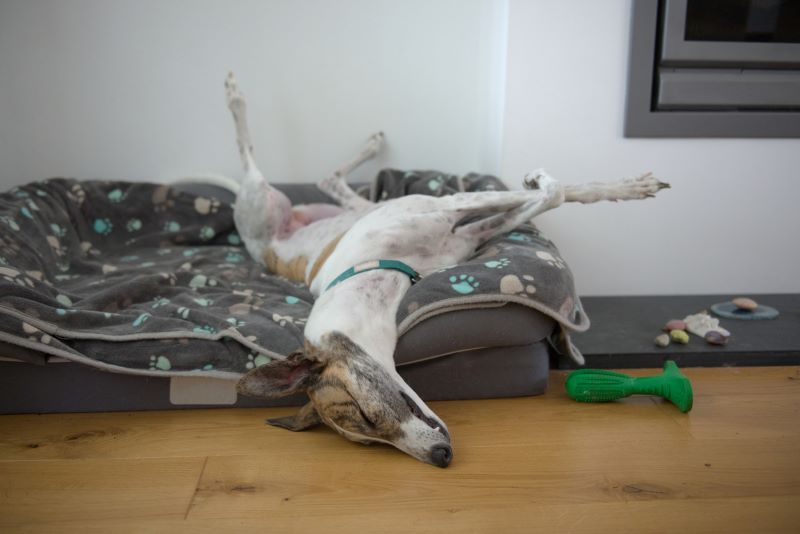Should you let your dog sleep in your bed?

This topic is largely down to personal choice. Some owners love nothing more than a snuggle at night with their dog but the flip side can be cramped space, flailing hairy limbs, and sleep disturbances! Some consider it unhygienic whilst others see no problem in sharing everything with their furry family. In this article, we’ll explore the pros and cons of letting your dog sleep in your bed, and some effective strategies to encourage your dog to sleep in their own space, ensuring a good night’s rest for both of you.
The advantages

Owners who are in camp yes report that they feel safer with their dog sleeping next to them- particularly if they live alone. The warmth and comfort of their dog promotes a sounder sleep and of course pets are well known for the mental health benefits that they bring to us humans! The sound of their breath can help insomniacs sleep and bring a sense of calm to owners.
Practically, owners who have a persistent bed-hopper may feel that letting the bed share occur simply is easier and allows them to catch up on that all important sleep time. Research has shown that sleeping together can promote a stronger emotional bond between owner and dog and comfort dogs greatly so it can be hugely positive for both owner and dog.
But if you are pushed for bed space, have a human bed mate who is not keen, or would simply rather not share that part of your life, what can you do to encourage your dog to love their own bed?
Bed space

Think carefully about where you want your dog’s bed to be placed. Some owners like to have their dogs in their room close by, others contained in a separate room. Think about creating a calm, quiet place for your dog to rest and recharge- dogs need lots and lots of sleep! Busy households can make this deep rest difficult for dogs which can then lead to them feeling anxious. Choose a suitable place and make it heavenly for them!
Creating a comfortable bed for your dog
One of the key steps in encouraging your dog to stay off your bed is to provide them with a comfortable and more appealing alternative. This could be a cosy dog bed with warm blankets perhaps. It’s important to choose a bed that suits your dog’s size and preferences. For instance, older dogs might benefit from orthopaedic beds, while smaller breeds often prefer beds with raised edges for snuggling. Anxious dogs make love a deep bed to offer them the feeling of security.
A great way to make this new space more enticing is by using treats to reward your dog for using their own bed. Choose a high value reward treat so that they really love being there!
Training techniques to discourage bed sharing

If you are changing a habit, remember that training your dog to stay off your bed requires patience and consistency. Start by establishing a clear command or signal to communicate that the bed is off-limits. Every time your dog attempts to jump on the bed, gently guide them off and direct them to their own bed while giving the command. Consistently rewarding them with positive praise or treats to make them understand what you want from them. Remember, scolding or punishment is not effective and can harm your relationship with your pet and lead to an anxious dog.
Keeping your dog off your bed at night might seem challenging at first, but with the right approach, it’s certainly achievable. By providing a comfortable alternative, using positive reinforcement, and being consistent with your training, you can successfully encourage your dog to sleep in their own space.
Letting your dog sleep in your bed

Whatever you decide, enjoy that special bond with your precious dog and remember- even if they don’t sleep in your bed, you can catch up on those wonderful cuddles during the day! Happy sleeping humans and dogs.